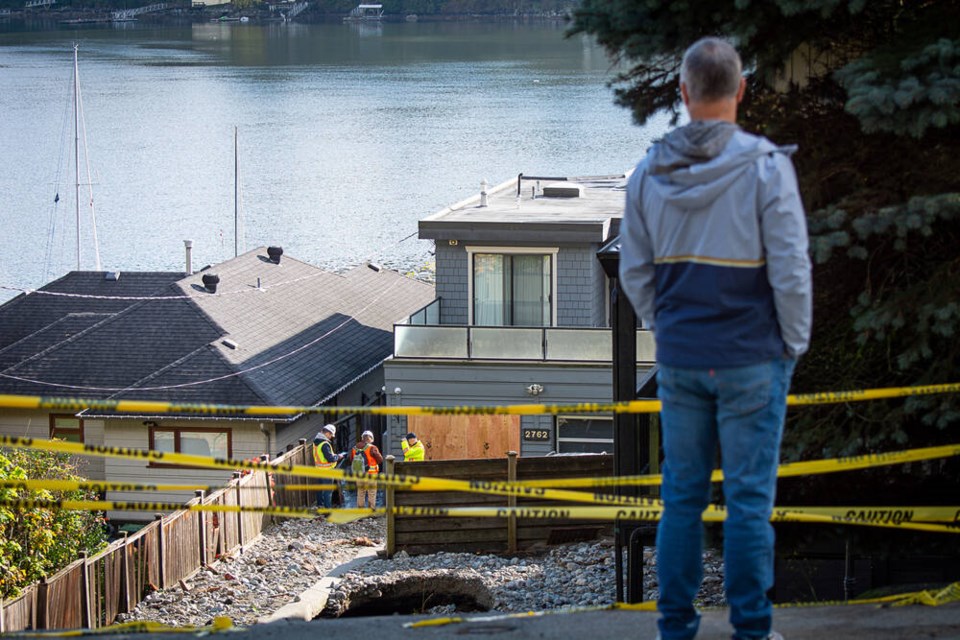April 22 is the 55th anniversary of Earth Day. Just five years ago, our planet’s environment was having one of its best earth days in decades.
The tragic pandemic that caused so much human misery also gave Planet Earth a rest – a much needed “breather.” Air pollution levels, as confirmed around the world, were reduced drastically. In Beijing, residents were able to see the stars at night, an impossibility one year earlier and, unfortunately, today. Fish could be clearly seen swimming in the canals of Venice. Yes – planet Earth experienced a one-year reprieve.
But these and many other outcomes that year provided little comfort. They came with a tragic cost from an invisible enemy, an enemy that caused a global pandemic. However, we did learn valuable lessons about earth’s ability to begin healing.
Earth Day was initiated on April 22, 1970. I can remember the euphoria of this recognition – with millions (20 million in the U.S. alone – 10 per cent of the population) marching around the world. I can recall clearly watching the strange but symbolic act of students burying a brand-new yellow Ford Maverick in San Jose, Calif. I can also recall being among many like-minded students at Simon Fraser University, and deciding then and there that I would enter the field of environmental science.
In 1970, the planet was home to around 3.7 billion people. There were about 200 million cars on the road. Today there are more than eight billion people on earth along with 1.5 billion cars. Meat consumption has almost quadrupled, and fish stocks are being depleted. Atmospheric carbon dioxide concentration has increased from a little more than 300 parts per million in 1970 to more than 420 ppm today, thereby warming the planet.
A reckoning
The warming planet is wreaking havoc over the entire globe, intensifying forest fires, droughts, sea- and land-ice loss, rising sea-levels, unprecedented and unpredictable flooding, and other storm events. According to a study published in Nature, the Greenland ice cap is losing an average of 30 millions tonnes of floating ice per hour, which is 20 per cent more than predicted. Moreover, due to excess carbon dioxide in the atmosphere, our oceans, home to more than half of all the world’s species, are on average 30 per cent more acidic, signalling the most rapid shift in ocean chemistry in the past 50 million years.
There are many more stark examples but – the main point – we are seeing dramatic levels of damage due to environmental degradation, and it’s getting worse each year. Over the past 55 years we have demanded more and more from the Earth, and we are paying the price all over the globe.
Backwards steps
Despite the mountains of evidence, we are still seeing significant dismissal and even denial of climate change and environmental degradation. In fact, we are seeing some governments go completely in the wrong direction. In the U.S., the Trump administration is weakening a host of air, water, land-use and climate change regulations, going as far as removing any reference to climate change in government communication. How can anyone make sense of these kinds of ludicrous decisions? Lessons were learned from COVID-19. Both crises show, in stark reality, the threats of catastrophes arising from the clash of nature and modern human activity.
Reason for hope
In today’s political climate, one can get a sense that environmental degradation and climate change issues have been pushed aside. But there are many good reasons for hope, especially knowing there are thousands of dedicated scientists, engineers, activists, policy makers, lawyers and others dedicating their careers to needed efforts, leading to some notable outcomes. For example, clean energy became cheaper much faster than expected. The cost of both solar energy and batteries fell tenfold in the last 10 years, and the cost of wind energy by two-thirds. Solar is now the cheapest form of new electricity in much of the world today. Moreover, a recent Oxford University study provides a convincing argument that ending fossil fuel use by 2050 will save the world at least 12 trillion dollars, thus disproving the fallacy that going green is economically difficult.
As well, we are seeing increasing use of litigation, with hearings and judgments across the world poised to throw light on the worst perpetrators, give victims a voice and force recalcitrant governments and companies into action. Helping in these cases is definitive evidence that the fossil fuel industry understood the reality of climate change as early as the 1960s. In a paper commissioned by the American Petroleum Association, the authors wrote, “There seems to be no doubt that the potential damage to our environment could be severe.”
Looking forward
Societies around the world are facing many acute issues needing the attention of those we elect. Many seem pressing and urgent in the shorter term. For the future of our children and grandchildren, however, climate change and ecological destruction cannot be delayed or set aside. Over my 50-year career in the field of environmental science, I have witnessed some amazing leaps of progress, but I have also experienced major bouts of frustration and exasperation at setbacks. I have seven grandchildren (ages 9 to 20). I want their futures and the futures of generations to come to be secure and safe. Business as usual is not on option.
Allan Maynard was born and raised in North Vancouver, living here for most of his life. In 1980 he founded an environmental consulting and laboratory business. This company specializing in carrying out environmental studies in support of projects such as environmental impact, contaminated sites, food safety, drinking water surveys and occupational safety. Since retiring in 2012, he has stayed involved in the environmental field by serving on advisory committees, giving lectures, and writing for a blog site he launched in 2020, environmentmatters.ca.



